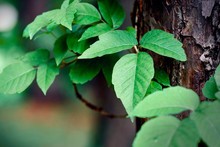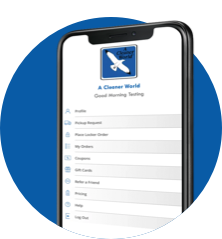A Cleaner World Blog
Removing Poison Ivy from Clothing
Just a few weeks ago, I had a run in with poison ivy, which surprised me because thanks to Gray and Boy Scouts, I am really good at identifying it. But we live in the country, have several acres to maintain, have a Beagle that likes to roam and roll, and I am obsessed with keeping the landscaped areas pristine. The odds are stacked against me.
What is Poison Ivy?
- It is a plant that grows as vines or low shrubs throughout most of the United States. Each leaf has three smaller leaflets and when touched, it leaves behind an oily substance called urushiol that causes red, swollen skin, blisters, and itching.
What to do if Exposed
- Thoroughly wash all the places on your skin you believe came in contact with the substance with dishwashing soap (like Dawn) because it is a degreaser. Rinse well so that the soap and oils are completely removed.
- Clean underneath your fingernails.
- Use wet compresses, calamine lotion, or cortisone cream to help reduce itching. Taking an antihistamine like Benadryl will also help reduce itching.
- Besides addressing skin exposure, you will also need to address the possibility of oils on clothing. Both dry cleaning and machine washing are acceptable cleaning methods for removing poison ivy. If you choose to wash these garments at home, wear gloves and then wash your hands thoroughly after the process. In addition, wash the contaminated clothing separately, just in case.
- Oil from poison ivy is extremely stable and will stay potent forever. In fact, you can get a rash from clothes that have oil on them from a prior wearing, even if it was last summer. If in doubt, it is better to go ahead and wash possibly exposed garments.
If you have clothing that’s been exposed to poison ivy, oak, or sumac and are concerned about caring for it yourself, simply place the items in a plastic garbage bag and bring them by any one of our convenient locations. Just be sure to let the CSR know at drop off why you are using extra precautions.



